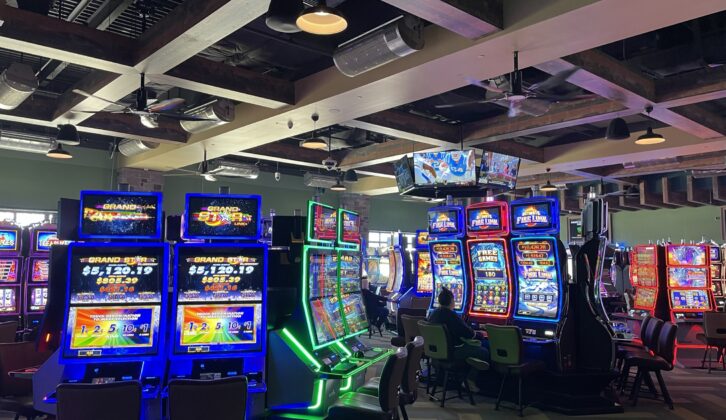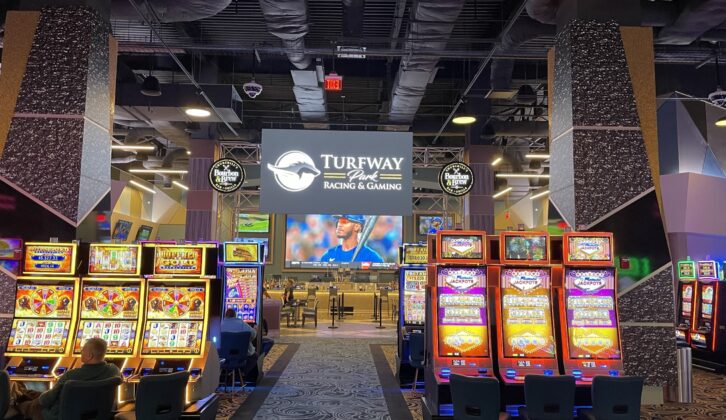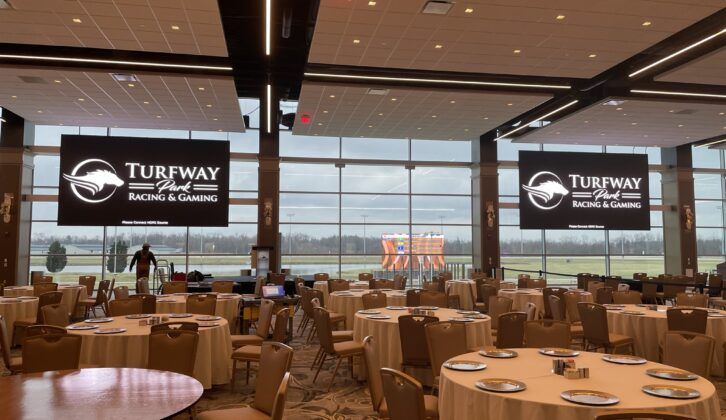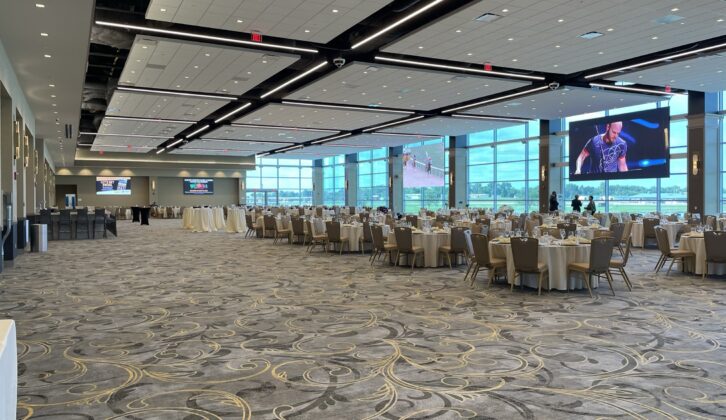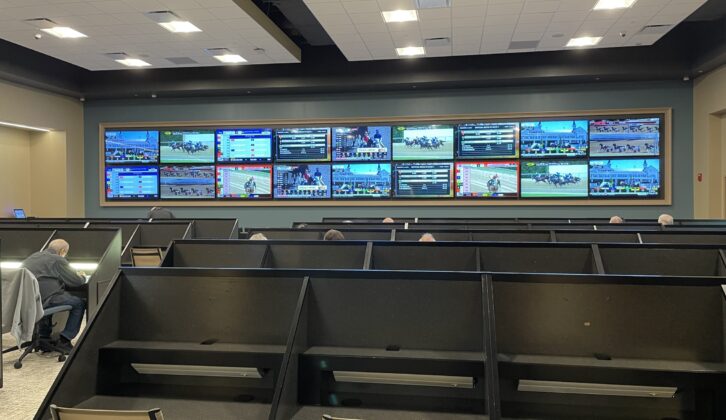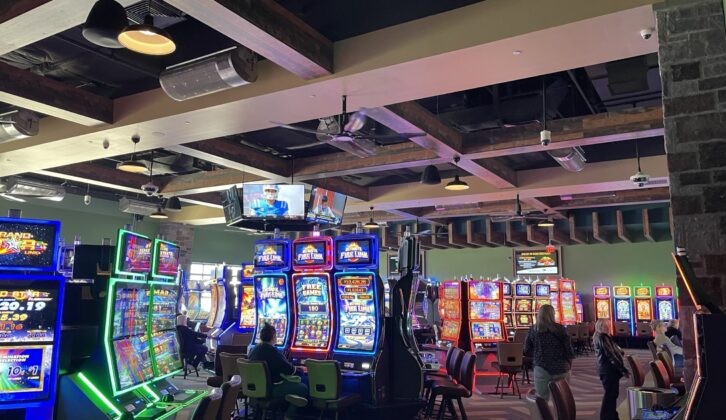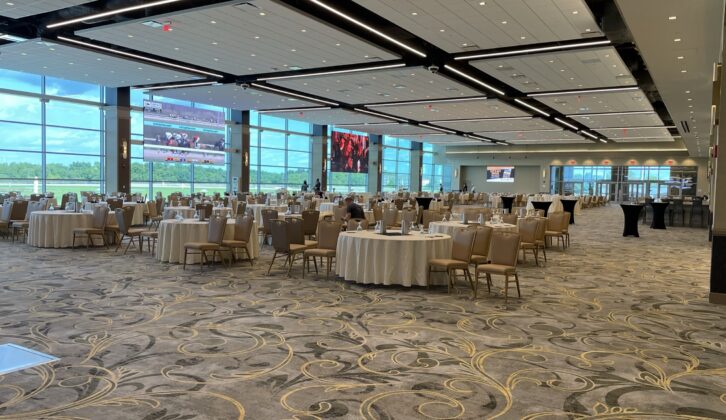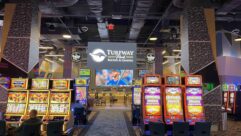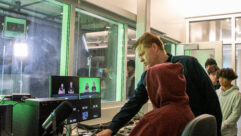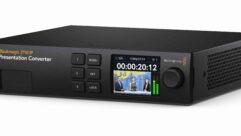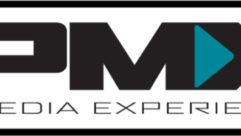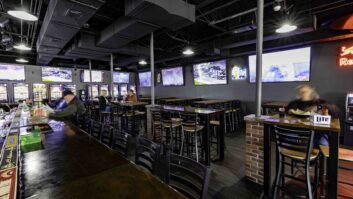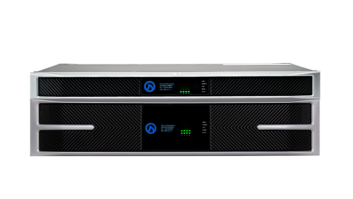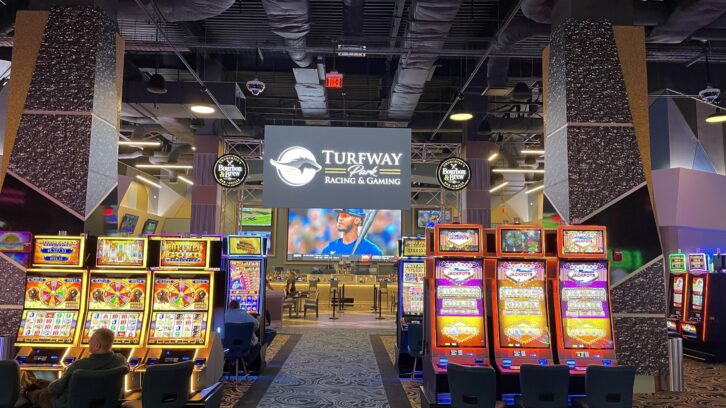
Established in 1959, Turfway Park Racing & Gaming has a rich history of live Thoroughbred horse racing. In the mid-1960s, Turfway Park introduced innovations, such as winter and night racing, and later became the first track to introduce simulcast wagering. In October 2019, Turfway Park, which initially opened as Latonia Race Course, was acquired by Churchill Downs Incorporated. Following the acquisition, Churchill Downs announced a $148 million renovation of the racetrack. The reconstruction of the live Thoroughbred and historical racing venue was part of Churchill Downs’ ongoing efforts to strengthen and bring innovations to Kentucky’s landmark horse racing industry.
Turfway Park’s multi-phase development is designed to offer an elevated experience while maintaining the tradition of horse racing in Kentucky. The facility includes a pari-mutuel gaming entertainment floor featuring up to 850 historical racing machines, a simulcast wagering area with player amenities, an 18,500 square-foot event center and several food and beverage venues.
AVoIP Case Study: Traditional meets AVoIP at engineering school
“Turfway is one of many locations that Churchill Downs has selected to revitalize as they expand their portfolio of properties,” explained Daniel Martin, CTS-D, CTS-I, engineer for American Sound and Electronics. “The old facility was torn down and completely reconstructed as a multi-use facility. It’s not only a host to a racetrack, but it provides gaming, live entertainment, corporate events and other events. The large event center features an LED wall designed to broadcast live horse racing and a myriad of content depending on the particular event.”
Martin added, “American Sound and Electronics was selected to perform all technology integration at Turfway Park. During the reconstruction, we had a very aggressive timeline to complete the technology integration within six months. The goal was to invite people into the facility to see the progress before September 2022, during the peak of supply chain disruptions.”
Previous installations for Churchill Downs have utilized HDBaseT to support long-distance distribution. NV5 Global, formerly KMK Technologies, led the technology design and consulting for R2A Architects at Turfway Park. NV5 recommended a new solution that provided increased flexibility while maintaining ultra-low latency across large facilities. The consultant, NV5, designed the entire project and selected Visionary’s PacketAV Matrix Series.
“We’ve designed Visionary’s PacketAV Matrix Series into numerous projects over the last three years,” said Thomas Knauss, CTS-D, principal consultant for NV5. “Their technology is a simple and intuitive method of transmitting and routing HDMI. Turfway has a multi-purpose center with a plethora of wall plates. It would typically lend itself to other solutions on the market, but the functionality and availability of these technologies have been turned upside down in recent years. The PacketAV Matrix Series provides a highly efficient distribution method for HDMI signals and simplifies the design and integration.”
NV5’s design deployed Visionary’s PacketAV Matrix Series to provide a flexible and reliable solution that covered each building across Turfway Park’s facility. Visionary’s PacketAV Matrix Series is an ultra-low latency encoder and decoder solution designed to bypass the constraints of traditional matrix distribution systems. The PacketAV Matrix Series supports USB 2.0 over IP, including KVM over IP, and can be deployed on any industry-standard IP network by harnessing the flexibility and scalability of converged IP networks.
“We’ve worked with Visionary’s technology in the past, but not to this scale,” noted Martin. “We deployed 60 endpoints across the property, so this integration is a much larger scale. Each of Visionary’s endpoints resides on the client’s network, which is shared with other streaming devices, including IPTV and control. Visionary is an exemplary citizen living on the client’s network. It’s not interfering with any other technologies, which is a great testament to the product.”
Martin added, “Visionary is incredibly easy to configure. Originally, we configured the endpoints off-site at our facility. We could stack all of the boxes on a single network to perform the firmware updates and provide individual IP addresses. We were done within two hours. You don’t have the privilege of configuring other pieces of equipment in an afternoon. It was a straightforward process because Visionary’s system is very intuitive.”
